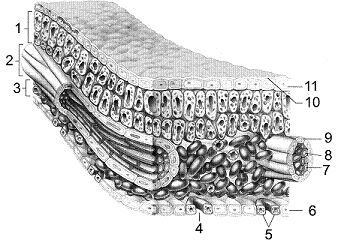In the experiment with peacock butterflies, the working hypothesis is that _____.
A. silence confuses both predator and prey
B. making sounds can provide a selective advantage to the prey
C. eye spots attract the attention of predators.
D. birds can find their prey by listening for their sounds
E. unpalatable species display distinctive wings
Answer: B
You might also like to view...
Where is the most distribution of red algae?
a. Surface regions b. Higher latitudes c. Intertidal regions d. Benthic regions
Melatonin regulates ____
a. heart rhythms in song birds b. the stimulation of cancer cell growth in humans c. the menstrual cycle in human females d. sleep cycles in humans e. milk production in mammals after giving birth
What two measures describe the distribution of a trait in a sample?
What will be an ideal response?
Refer to Figure 34-2. The structure labeled __________ is responsible for the transport of dissolved sugars

a. 4
b. 5
c. 6
d. 7
e. 9